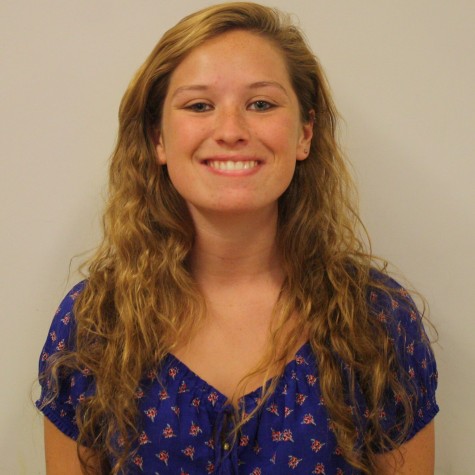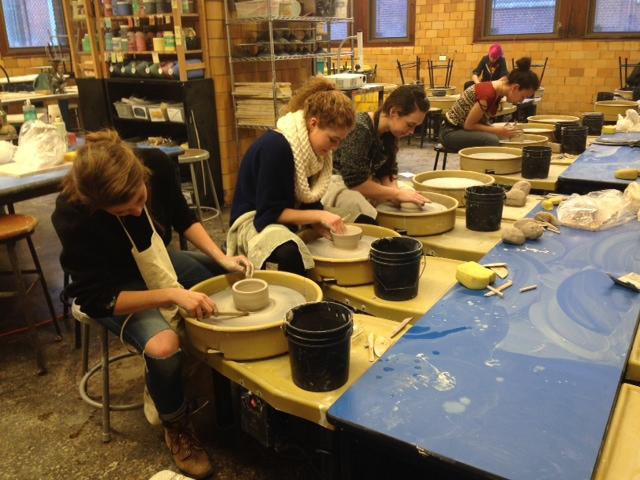Ms. Chisholm takes over wheel-throwing elective
At the start of the school year, room 140 became the new home of the wheel-throwing elective, and Ms. Chisholm became the new teacher. After the exit of Ms. Moore, Ms. Chisholm filled her spot and took over the class.
She was eager to take the position. Since her first day, Chisholm has kept hold on Moore’s traditions and stayed in contact with her. She also made small changes to make the class her own.
“I am pretty much planning on following the curriculum that Moore set out for this year, because it is smartly designed…[something] I have changed has been a regular addition to the homework,” Chisholm said.
Knowing Moore had been running the class for a number of successful years, Chisholm did not hesitate to reach out to her for tips and advice. Since the beginning of the year, the two have communicated through phone calls and e-mail, and Moore has been generous with her support.
“Her greatest tip has been to get some civics students assigned to our room to be in charge of recycling clay” Chisholm said, “She also recommended that the advanced students in the class follow the same projects as the beginners but that they are required to make more complex versions of the same forms.”
Despite now being a wheel-throwing teacher, Chisholm says that she has always considered herself more of a drawer and painter than she has a potter. Besides small projects, she has not taught a ceramics class until now – but she has always loved working with clay.
“After college, I would occasionally take some five week refresher courses on the wheel at Lillstreet Art Center…to remember how fun the wheel is again and get back the muscle memory that was fading away,” Chisholm said.
As a teacher, she makes her students her main focus. Her overall goal is to help her wheel-throwing students master their ability to make figures, from small cups to platters, so that by the fourth quarter, they are able to create their own “unique sets of pottery.”
As an art teacher, she also strives to encourage creativity and expression. Once her pottery students have the ability to create practical figures, she pushes them to be artful and original, and she helps them find their own style. Ms. Chisholm feels that when it comes to pottery, function takes priority over style.
“I would say pottery is more about variations on a single theme than my other classes, more like math or statistics almost. It seems less conceptual than other classes I have taught,” Chisholm said. “Self-expression and emotion are less overt than in my other classes. These qualities are present in pottery but it seems like they take longer to manifest in the work, perhaps because it is functional first and foremost.”
Students have taken a great liking to the class. When they signed up last spring, most were under the impression that Moore would most likely be their teacher, with the exception of a few.
“I had Ms. Moore last year so when she made the decision to teach at a new school she contacted all of her old students and let us know,” Taylor Rebora, Div. 578, said.
Rebora is one of Ms. Chisholm’s advanced students, so she is working at a faster pace than her classmates.
Although Chisholm kept most of Moore’s previous teaching traditions, every teacher is different. Students have appreciated the opportunities their new teacher has provided them with, and the ways she has helped them learn and experiment at their own level.
“We are all allowed to manage our own time and work at our own pace. It doesn’t feel rushed,” Alex Chanen, Div. 752, said.
“I like that she gives us one way to do something, and then gives us the option to explore different ways of doing it. I know, like, 5 ways to make 1 cup,” Paige Tuttle, Div. 560, said. “And she gives us really funky homework assignments. They make you think about artsy, fun stuff to make into cool designs!”
Chisholm has encountered some difficulties, such as keeping the room both clean and functional, and balancing her time spent in the wheel-throwing room and room 447, where she teaches Art 1. Despite this,she has enjoyed the new position.
“[One of my favorite parts is] seeing students react so positively to improving over time on the wheel, and watching [their] gratified reactions as they see their work after it was fired in the kilns,” Chisholm said.
Students have appreciated the new methods and techniques brought to the class, and look forward to seeing what they can make by the end of the school year.
Your donations directly fund the Lane Tech student journalism program—covering essential costs like website hosting and technology not supported by our school or district. Your generosity empowers our student reporters to investigate, write, and publish impactful stories that matter to our school community.
This website is more than a publishing platform—it's an archive, a research tool, and a source of truth. Every dollar helps us preserve and grow this resource so future students can learn from and build on the work being done today.
Thank you for supporting the next generation of journalists at Lane Tech College Prep!

Anna Lagattuta is a features editor for The Warrior. Anna writes, edits and oversees feature stories and is a co-founder of the online Archives of the...

